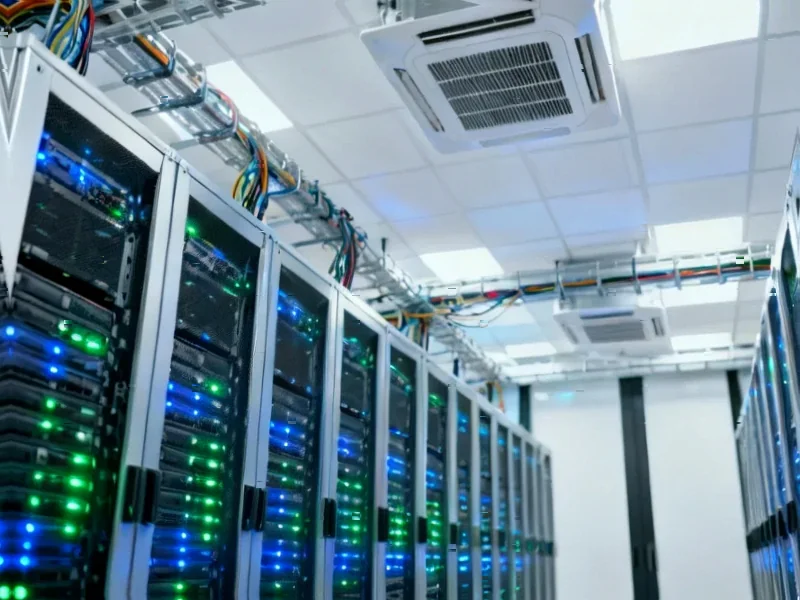According to DCD, Microsoft spent $34.9 billion in capital expenditures during Q1 of fiscal year 2026, with $11.1 billion dedicated specifically to data center space leases. CEO Satya Nadella announced plans to increase AI capacity by over 80% throughout FY2026 and roughly double the company’s data center footprint within two years. The company revealed it had built approximately 2GW of data center capacity in 2025 alone and ended the fiscal year with more than 400 data centers globally. CFO Amy Hood emphasized that space and power constraints, not compute hardware, have been the primary bottlenecks driving the leasing strategy, with Microsoft signing massive deals including a $14 billion agreement with Nscale and $33 billion in compute capacity arrangements with neocloud providers. This unprecedented infrastructure investment signals a fundamental shift in how tech giants approach scaling.
Table of Contents
The Leasing Strategy Revolution
Microsoft’s pivot toward massive data center leasing represents a strategic evolution in cloud computing infrastructure. Historically, hyperscalers preferred owning their data centers for greater control and long-term cost efficiency. However, the explosive demand for AI compute has created a situation where traditional build-out timelines can’t keep pace with market needs. Leasing provides immediate capacity access while spreading capital expenditure obligations over 15-20 year terms. This approach allows Microsoft to secure power and space—the two most constrained resources in today’s AI infrastructure race—without the 2-3 year lead times typically required for new construction.
The Power and Space Bottleneck
CFO Amy Hood’s comment that “we were short of space or power” reveals the fundamental constraint driving this spending spree. Modern AI data centers require enormous energy densities—often 50-100kW per rack compared to 5-10kW for traditional cloud workloads. This creates dual challenges: securing sufficient electrical capacity from utilities and designing facilities that can handle extreme thermal loads. Many regions with available land lack the grid capacity to support AI-scale data centers, while urban areas with existing infrastructure lack physical space. Microsoft’s leasing strategy effectively outsources the power and space acquisition problem to specialized providers who can navigate local regulations and utility relationships more efficiently.
The Financial Risk Landscape
The scale of Microsoft’s commitments—$392 billion in remaining performance obligations—introduces significant financial exposure. While CFO Hood emphasized the flexibility of their “flex fleet,” the concentration risk is substantial. Many of these massive contracts are with startups and AI companies whose revenue models remain unproven at scale. If the AI bubble deflates or certain applications fail to achieve commercial viability, Microsoft could face underutilized capacity while still obligated to lease payments. The 15-20 year lease terms create long-term fixed costs that must be supported by sustained demand, making this bet highly dependent on AI adoption continuing its exponential growth trajectory.
Competitive Implications
Microsoft’s aggressive leasing strategy pressures competitors to follow suit or risk capacity constraints limiting their AI offerings. Google Cloud and AWS now face difficult decisions: match Microsoft’s leasing commitments and potentially overextend financially, or risk losing enterprise AI customers to Azure’s available capacity. This infrastructure arms race also advantages companies with stronger balance sheets, potentially squeezing smaller cloud providers out of the AI infrastructure market entirely. The $100+ million contracts mentioned in the earnings call suggest enterprises are making long-term platform commitments based on available AI capacity rather than just feature comparisons.
The Modernization Imperative
Nadella’s emphasis on “modernizing the fleet” highlights another critical challenge. AI hardware evolves rapidly, with each new generation of GPUs offering significant performance improvements. A data center filled with today’s cutting-edge chips could be substantially less efficient than one built with next-year’s technology. Microsoft’s strategy of continuous refresh means they’re not just building capacity—they’re committing to ongoing hardware replacement cycles. This creates additional capital requirements beyond the initial lease commitments, as the company must continually invest in newer, more efficient processors to maintain competitive performance and energy efficiency.
Sustainability Concerns
The environmental impact of this massive infrastructure expansion cannot be overlooked. Microsoft’s planned doubling of data center footprint, combined with the extreme energy demands of AI workloads, raises serious questions about carbon emissions and water usage for cooling. While Microsoft has made ambitious sustainability commitments, scaling at this pace while maintaining environmental goals presents enormous challenges. The company will need to simultaneously secure massive amounts of renewable energy and develop more efficient cooling technologies to prevent this AI infrastructure boom from undermining its climate objectives.
Related Articles You May Find Interesting
- PhantomRaven’s Remote Dynamic Dependencies Redefine Supply Chain Threats
- The Workplace Wearable Dilemma: Productivity vs. Privacy
- Samsung’s Browser Gamble: Why Mobile-First Strategy Hits PC Market
- Chipotle’s Inflation Gamble: Can Value Over Volume Pay Off?
- Government Shutdown Casts Shadow on ServiceNow’s AI-Driven Growth



